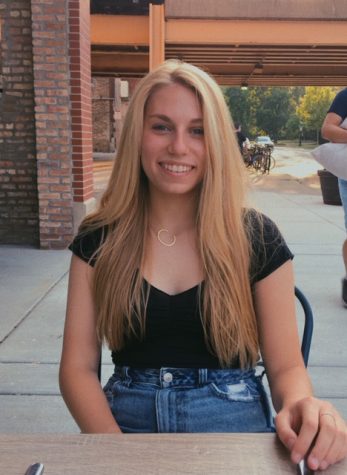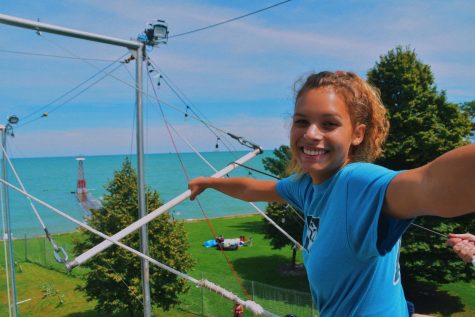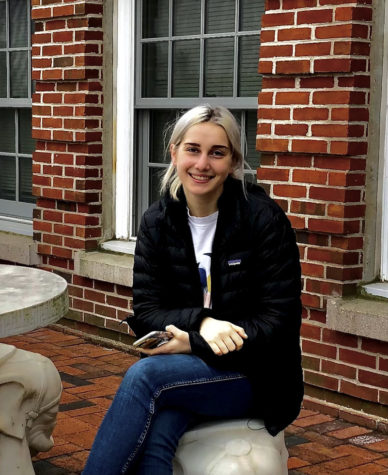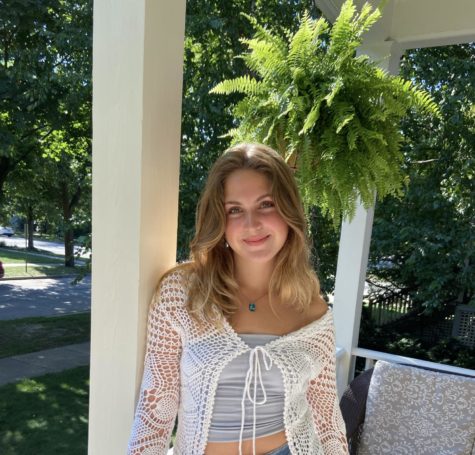Social Consciousness
March 2, 2020
HISTORY
In 2014, ETHS introduced its first Black Student Summit. This event, which at the time was broken down into a Black Male and Female Summit, marked the beginning of the Social Consciousness Series.
The ETHS website states that the Social Consciousness Series “includes programs and events that invite critical reflection and examine institutional practices.” This series includes the Black Summit, the Middle Eastern North Africa and Asian Summit, the LGBTQ+ summit, the Latinx Summit and the Parent Summit, as well as the new Becoming Antiracist workshop. These events aim to initiate discussions about students’ lived experiences based on race, gender and sexual identity, while also providing space for reflection, growth, understanding and unity among students and staff.
According to Equity Analyst Lauren Hamilton, the idea for the first Black male summit came from discussions around centering the Black experience at ETHS in a way not historically facilitated in classes.
“How often are students…of color being in spaces where they feel welcome and they feel, as though they belong in those spaces they’re in, they’re not just there, they’re not an intrusion upon those spaces?” Hamilton asks. “When we talk about disciplinary actions and how Black male students are disproportionately represented in suspension rates and referrals that are written up. It was important for the district…to make sure that they were combatting those biases and the reality of what it means to be a Black male student in the building sometimes.”
Although there was a significant emphasis on the Black male experience at ETHS, the focus is moving more towards evoking a sense of belonging amongst the district.
“The Black female summit was started to uplift a population that folks feel like sometimes we forget about,” Hamilton says.
In 2017, the Summit coordinating committee agreed to combine the Black male and female Summit into one Black Student Summit for greater inclusion. The committee agreed that assigning genders to different summits excluded non-binary attendees.
For the first time this year, the Black Summit was divided into two days with freshmen and sophomores attending one day and juniors and seniors attending the second day. This contrasts from the previous model which had attendance divided up alphabetically.
“In these workshops, sometimes the thought process is different. You have someone who is 17, 18, about to leave high school and go out into the real world. Their mindset is a little different as opposed to a 14 or 15 year old just coming into high school trying to navigate,” College and Career Support Specialist Llyoandra Cooper says.
ETHS officially hosted its first Latinx Summit on April 22nd of 2016. The Summit has utilized resources from both ETHS and Northwestern, with former ETHS staff member Margarita Vizcarra and Northwestern Latina/o Studies professor Alejandro Carrión leading the planning for the second and third Summits. This collaboration was fundamental in framing the Summit for those years. Since then, the Summit planning has incorporated more student involvement, which is now a requirement for all of the Summit planning committees.
The Latinx Summit aims to highlight historical Latinx adversity and recognize the intersections of race, gender, sexuality and class within students’ identities.
Right now I’m taking Chicano movement and that’s really the only space where I learned specifically about Mexican American history. Otherwise all like Latinx history or even current events are brushed over,” says junior Ana Ariza.
Intersectionality is also central to the annual LGBTQ+ summit. In 2017, ETHS hosted its first LGBTQ+ summit to institute discussions regarding the “intersection of queerness in relation to race, gender identity and religion,” according to Samantha Severin, a senior and member of the student planning committee for the Summit.
The Summit focuses on maintaining visibility on binary and non-binary isssues, outreach, media representation of the community and overall inclusivity, while also providing a safe space for the attendees.
“It’s a learning experience as well as a fun thing, and it also is providing education and it is providing the resources for certain things. And so I think it’s more so catering to people who tend to not be catered to,” junior Summit attendee Rael Tiemann says.
Since its beginning, the LGBTQ+ summit has been coordinated by a student planning committee and in collaboration with the Gender & Sexuality Alliance.
The MENAA summit began in 2016 in response to “a few students who identified as South Asian and Middle Eastern [who] were in a club where the students started talking about the need for a Summit,” Takumi Iseda, Director of Communications and member of the MENAA Summit planning committee, says.
As the Summit has progressed over the years, student and staff coordinators have adapted the name, so the Summit is more inclusive of different identities. This is the first year the Summit has been labeled the MENAA summit, as it was previously the SAME summit.
“It’s Middle Eastern, North African and Asian, which is MENAA,” says Iseda. “So, it’s essentially making sure that in the power of naming, we continue to look at how we’re constructing the space and making sure that we’re being as inclusive as we can.”
In 2018, ETHS hosted its first Parent Summit to bring together parents and guardians in the district to have conversations about race and equity. Unlike the other Summits, this event brings together community members of all different identities and backgrounds to discuss many similar ideas as those mentioned at the Summits.
The Summit will take place again this May and is currently being coordinated by Boosters, staff and community members.
One recent development in the Social Consciousness series is the addition of a workshop called “Becoming Antiracist: Interrogating and Decentering Whiteness.” These events, which are not labeled Summits as they do not affirm whiteness, aim to provide a space for students, particularly white students, to better understand their white identities, the construction of whiteness, privilege, and antiracism.
“I believe we need to engage all students in eliminating the racial predictability and disproportionality of which student groups occupy the highest- and lowest-achievement categories,” New Student Transition Coordinator Alicia Hart says, speaking to why ETHS needs an antiracism workshop.
Various other workshops and events with the goal of promoting equity also fit under the Social Consciousness Series. These include the Beyond Diversity professional development new ETHS staff members attend as well as an upcoming community exhibit and presentation by Calvin Terrell.
In respect to all of the Summits throughout the past six years, one goal has rung true across the board: the strive to implement identity-focused conversation, provide students with resources and leave a lasting impression of empowerment.
STUDENT IMPACT
Students who have experienced the Summits speak to how these events center on conversations about their identities, resources to navigating their identities and encouraging student agency.
Severin has attended the LGBTQ+ Student Summit every year since 2016.
“I really enjoy spending time with people who identify with me, and who can relate to me,” Severin says. “I found it to be contemplative but joyful.”
Severin notes that the Summit is meant to be a safe space, and she was surprised to see its diversity.
“What’s really powerful to me in freshman year, seeing, you know, all these people; I didn’t know a ton of them. A lot of them were seniors and juniors and sort of seeing, you know, the Summit is full of people of color,” Severin says.
Black Student Summit coordinator Maya Acacia attended the Black Student Summit last year and joined the committee to make changes she wanted to see.
“[The Summits are] supposed to educate [students about] navigating through spaces,” she says. “It’s supposed to teach students how to be themselves and know how to take up space in a respectful way.”
Acacia notes that this year’s Black Student Summit additionally offered a focus on mental health.
“There’s a big stigma in the African American community about mental health and how depression, it’s bad, and it’s all in your head and it’s weak,” Acacia says. “[The Summit gives the students] different ideas to
show them that it’s okay, and you’re not always gonna be happy.”
These additions to the summits are due to students’ contribution to Summit planning. As the Social Consciousness Series has evolved over the years, staff coordinators have attempted to incorporate student voice and insight as the driving force of Summit planning.
“One thing that has changed is that it’s required that all of the Summit planners who are a part of those affinity spaces must include students, so the students and staff plan the Summits together,” Campbell says. “Now we have a much more robust student participation in the planning and the execution of the Summits.”
Severin has played a significant role in shaping the LGBTQ+ summit during her time at ETHS.
“The staff helped work with the students, so I felt really involved, making decisions [planning for] food, who’s leading the workshops, reaching out to the keynote speakers that we always have,” Severin says. “It’s been a very similar experience both years. It’s just really nice to be involved and help plan something I love instead of just like showing up.”
By creating a strong partnership between students and staff in the planning process, both groups have created a mutually shared Summit experience for both students and staff.
“I just remember the first time that I participated and the number of staff just saying how incredibly powerful it was for them and how they wished they had that when they were in high school,” says Iseda. “I certainly didn’t have that experience when I was in high school, so I really appreciated that I could be part of something that, you know, obviously, benefited our students because they had a space where their identities could be seen and affirmed. But also for me personally, it did the same thing.”
While the summits are inarguably geared towards students who identify with the specific affinity group, students who identify as allies still attend. Allies are people who don’t directly identify with the affinity group, but rather are supporters of these communities.
All ETHS students are allowed to attend any of the Social Consciousness Series events; however, there are students like Rael Tiemann who believe the communities the Summits are directed toward should have priority attendance.
“I believe that first and foremost, it is for the community, Then, if someone chooses to support and there are enough spaces available, they can go, but the resources are not there for people not a part of the community,” says Tiemann. “The resources are there for the people who are part of the community who actually need it, and especially with the LGBTQ+ student summit, there are a limited number of spaces, so it isn’t good if you are taking away the space and resources of the people who need it.”
Allies can be viewed as supporters or disruptors at these events.
“It all goes back to intention. At past events, I know for specifically like the Black Student Summit and the Latinx Summit, students who have gone and don’t identify as Black or Latinx have made other students feel as though they were being disruptive or weren’t really respectful of the work that had been put into it,” Hamilton says.
While some current ETHS students recognize the importance of the summits in the ETHS environment, many recent ETHS graduates are able to reflect back upon their summit experiences and note the incredible impact those experiences have brought them in their lives during and after ETHS.
“It’s good to allow yourself to think critically about the different ways that being a Latinx student at ETHS impacts you,” says ETHS graduate Grace Tabet. “I learned a lot through conversations with my Latinx peers, and I just came closer with the community.”
For students like Tabet who have chosen to pursue a four-year college education, the Summits have inspired them to take a greater interest in their identity, particularly as it pertains to academic spaces.
“I have continued to be proud of the person I am and the identities I hold, and I have decided to take a class that deals directly with immigration and the Latinx community, where we will actually be able to visit detention centers and help many Latinx families,” says Tabet. “Additionally, I have been volunteering in an elementary school in one of the ESL classes, so I can improve my Spanish and help those students be proud of their heritage and cultures.”
The workshops and conversations at the Social Consciousness Series often impact how students approach new learning environments or professional spaces in the future. Jamaal Perrin, who graduated from ETHS in 2019, attended the Black Student Summit and the Latinx Student Summit in his four years at ETHS. He cited the Summits’ basis of empowerment as one of the most powerful aspects.
“I feel like the greatest thing I took from that was motivation. Like, ‘hey, just ‘cause you’re Black, or any race really, you still can do anything that anyone else can do,” says Perrin. “Your skin color doesn’t define you.’ It’s like, we’re all people, we’re all humans, so we all have the mental capacity and the capability to just do anything we really believe we can do.”
The Social Consciousness series has continued to expand, with the Becoming Antiracist workshop being added to the series, furthering the mission to incorporate learning and empowerment into one unique experience.
“I think at first I didn’t necessarily think of Summits as being, you know, a learning experience in the traditional sense of the word or the phrase. But now, I think that they have actually evolved as well and are valuable educational experiences for students,” Perrin says.
As many staff members continue to envision what the future of the Summits will look like, it is important that student voice remains at the forefront.
“I think that as long as we continue to listen to students and what they really want out of their high school experience, and also what traditionally has been missing, we can help to fill some of those gaps,” Iseda says.
WHAT’S NEXT
While the conversations that take place at the Summits and workshops within the Social Consciousness Series play a significant role in fostering a sense of belonging for students and promoting critical reflection, there is more work to be done.
“We don’t come to the summits with the intention of solving everything in two days. We definitely take bits and pieces and try to chisel away at the big picture everytime and just give us a starting point so we can do more work,” Cooper says.
The hope is that students are taking what they have learned at the Summits into the rest of their lives both at ETHS and outside of the school. Some teachers are working to incorporate topics around identity that connect to themes and ideas brought up in the summits.
“What does it look like for classroom teachers to be talking about why we have these events in the first place? Can they connect with students who maybe have gone or haven’t gone but still could learn a lot from the work that is being done?” Hamilton says.
English teacher and one of the first MENAA Summit coordinators, Anita Bucio, has worked to implement equity ideas into her classroom curriculum.
“I think it’s really important that we extend beyond white narratives and I tried to push my teaching to figure out how to do that,” says Bucio. “What I realize more and more each year is that I, outside of the Asian and Middle Eastern [cultures] haven’t been taught what that looks like. As a teacher each year, me and my partner do a lot of work to figure out how to bring in voices of joy and excellence, history and story that have been silent from our educational system.”
While some teachers, like Bucio, are aligning their curricular focus to the goals of the Social Consciousness series, some staff have not fully gotten on board with this initiative.
Moving forward, Campbell hopes to continue to garner more support for the Summits and the Social Consciousness series.
“Whenever I hear a Summit naysayer or someone who doesn’t understand, it’s always a person that I perceive is white and cisgender. Even if kids are missing a day or two of class, this is about the whole child and their entire experience at ETHS, and as a part of their entire experience at ETHS, I would want us to continue to support those efforts,” Campbell says.
Hamilton and other administrators are working to provide that support for students in the building.
“I think folks feel very special and seen on these days [Summits] but I think that we have a lot more to do as a district to really have spaces of inclusion and belonging and equity here. This is just one small part of that work.”
Corrected on March 5, 2020: The original version of this story spelled Vizcarra and Carrión’s names spelled incorrectly. This version contains the correctly-spelled names.













